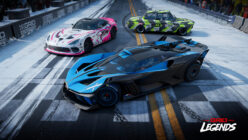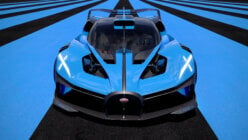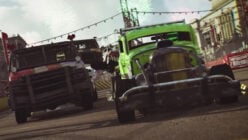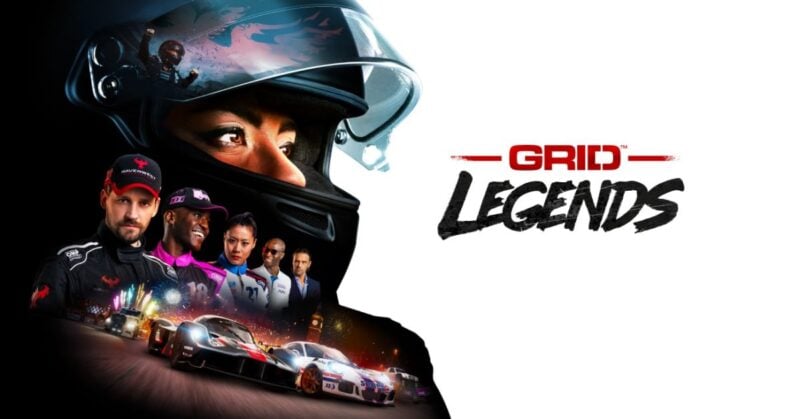
2022 marks the 25th anniversary of a major racing game series. No, not that one (well, okay, that one too), but the TOCA series.
First launched in November 1997, TOCA evolved into more than just touring cars and, by 2008, had become Race Driver: Grid. Technically the seventh TOCA title, the first Grid series game also launched the Ego engine from Codemasters for a track racer.
After a little pause, Codies resurrected the series in 2019 with the mononymous GRID. With that 25th anniversary just around the corner, there’s a new game in the series, GRID Legends, and we’ve been giving it a workout to see how it stacks up.
GRID Legends launches today, February 25, on PS4/5, Xbox One/Series, and PC. We’ve been reviewing the title on PlayStation 5, courtesy of a review code provided by Codemasters.
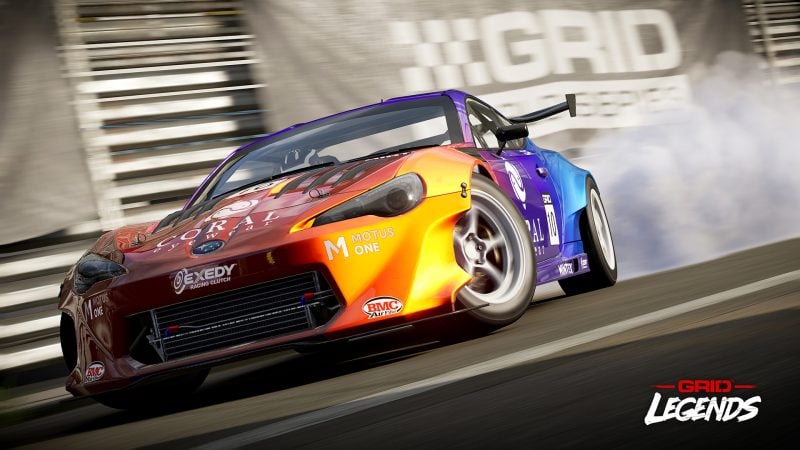
Content and Value For Money
By modern standards, the car list in Legends is really rather compact. Depending on what version you pick up and whether you pre-ordered or not, there’s approximately 120 cars in total at launch, spread over nine classes. In fact the classes also have subclasses, so you will find cars that are the only one of their type.
That said, it does cover a lot of bases, so while you might not find a specific car you want, there’s a pretty high chance of finding something similar — so long as someone, somewhere has raced it. Well, at least on a track; there’s no rally cars (or tracks) here.
From classic Minis to racing trucks, entry level hatches up to LMP1, and just about every rung of the motorsports ladder between them, there’s probably a racing car in there to suit you. It’s like a greatest hits of racing cars, if you could only choose one or two of each type.
On the other side of the coin, the track list is pretty large if you take all circuit layouts into consideration. There’s 22 locations only, but they average out at more than six tracks per venue.
Take a closer look and you’ll probably spot that, even for the real-world venues, this includes an awful lot of reverse-direction tracks. Whether you consider that padding or not is up to you, but if you’ve ever wanted to try Mount Panorama run clockwise, or to see what driving up Paddock Hill bend at Brands Hatch is like, and other games won’t allow it, you can do it with GRID Legends. Don’t knock it — Red Bull Ring is hilarious in reverse.
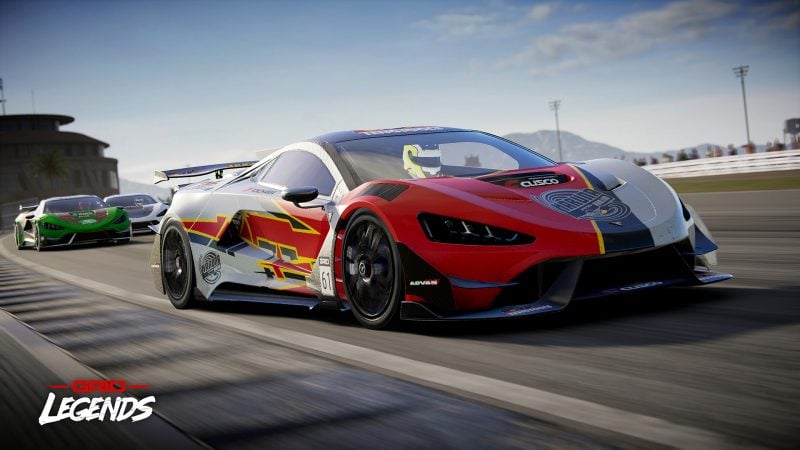
There’s a traditional Codemasters livery editor, which is rudimentary in nature but pretty effective at creating quick and plausible liveries. Essentially you can select from a pretty large range of designs (some of which you have to unlock through progression, of course), and then pick the colorings for the four layers, to create your finished design.
Vehicle tuning is also present, but again in a fairly basic form. Each car has up to three stages of tune for up to five aspects of the vehicle — power (engine), acceleration (gearbox), braking (brakes), handling (suspension), and extras (bonuses) — which you can buy, although again you need to unlock the various stages by driving the car first.
Once you get to a race you can also adjust your vehicle settings in a similar manner. Five sliders allow you to adjust gearing, springs, dampers, anti-roll bars, and brake bias, each to one of five levels. It’s quick and easy, but ultimately not particularly deep.
We should also note the Nemesis function. This returns from the previous GRID, but it’s a good dose more subtle. Essentially if you hit someone too hard or too often (or they hit you), they’ll get a bit of red mist and try to take you out with mid-straight swerves or full-on dive bombs — and it can last beyond just the race you’re in.
In addition there’s team-mate and mechanic leveling mechanisms. Essentially you can upgrade these members of your team (your team-mate is set as Valentin Manzi, which is a situation explained by the Story mode) by up to three levels in each of three abilities across three different categories. That might help you get more money from races thanks to your team-mate’s finishes, or spend less on upgrades.
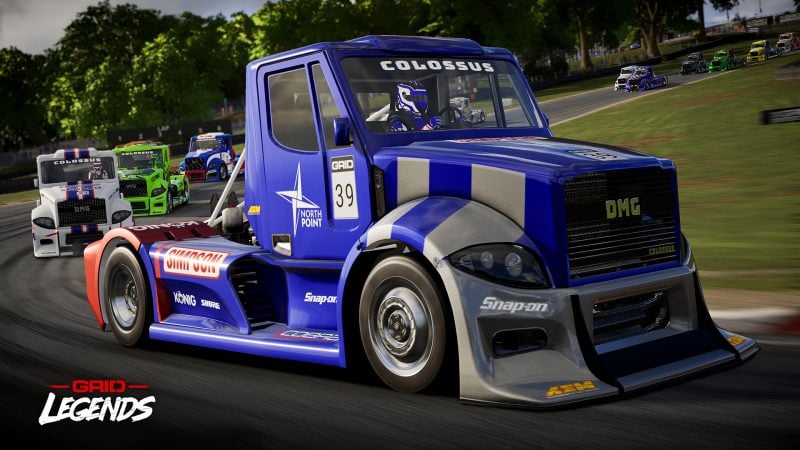
There’s certainly plenty to do in the career mode, which will set you racing across a bunch of different disciplines — including drift, elimination, and time attack — in all of the car classes in the game. You’ll need to complete lower tier events to unlock higher level ones, and also gain the XP required to see your driver level advance high enough to progress from Rookie to Semi-Pro, Pro, and finally the famous GRID Gauntlet.
You won’t need to worry about going back and grinding because you don’t have the right car, as you can drive a loan vehicle — though you earn fewer rewards for doing so — which is a good job as you might need to be a higher level in that particular type of vehicle to buy the car you want. We did have to grind a little bit to drive far enough to unlock the higher tier tuning required for an event though.
Of course the major feature being touted for GRID Legends is the “Driven to Glory” story mode. It’s hardly controversial to say that story modes in racing games haven’t been entirely convincing in the past, and there’ll have been more than a handful of people who physically cringed at the mere mention of a story mode. In GRID Legends it’s actually surprisingly enjoyable.
That does come absolutely loaded with caveats though. The plot is nothing you haven’t seen before: you’re a newbie on an underdog team, the fastest guy on the grid has a bad attitude, there’s a major incident caused by his bad attitude, and we won’t spoil the ending but you can probably guess at it.
There’s absolutely no context in execution either, as the game only cares if you meet your target. Win a race you need only to place eighth in and there’s no additional reward and the commentary team doesn’t act like you won. Another example is when your mechanic chides you for making too much contact with someone who becomes your Nemesis simply for being near them (the Ravenwest drivers later in the story).
Some scenes are also entirely implausible; the characters know they’re being filmed in the style of Drive to Survive and look at the cameras while they’re having career-ending (not to mention litigation-inducing) conversations, rather than mere unguarded quips.
But the choice to go live-action elevates the whole thing above the likes of DIRT 5’s audio-only spats, and the lifeless expressions of F1 2021’s Aiden Jackson and Devon Butler, and the actors do a solid job. There’s a nice little nod back to Grid games of old at the very end too.
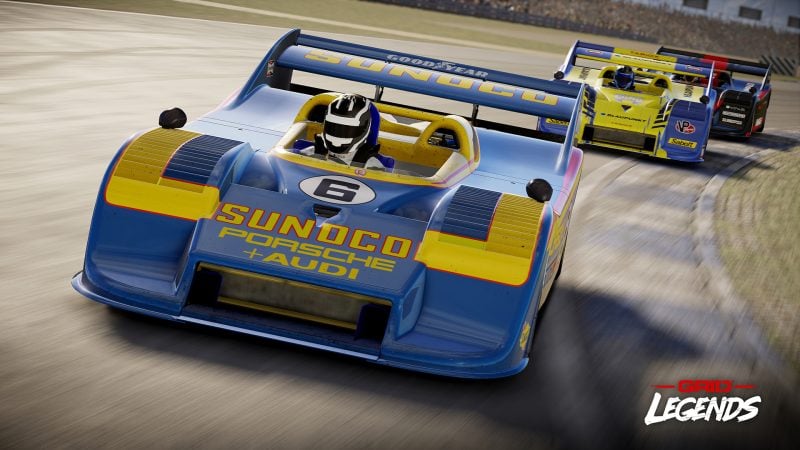
Online Features
The online offering is pretty reasonable, but also packs in one of the neatest features we’ve seen in a while.
There’s some fairly standard offerings, with weekly and monthly events — some of which are exclusive to Deluxe Edition buyers — and public and private online multiplayer events. What you won’t find is any ranked racing at all, so if you’re into your esports you should look elsewhere.
The Race Creator tools is a pretty powerful piece of kit for online play too. In essence you can pick pretty much any combination of anything in the game — not just cars, but car classes, race types, tracks, weather conditions, time of day, mechanical damage (including terminal), boost zones, ramps, and anything else you like — for as many laps as you like, for up to the maximum of 22 players.
While there are a few billion combinations of races, you can only save a maximum of four in the slots available. That’s a little disappointing, but it barely takes any time to set a new event up so not truly restrictive. And if you’re worried that you won’t find 21 other people to race, that’s where the truly cool feature comes in.
If there aren’t enough humans available, the rest of your grid is made up of AI, who you’ll race against until people join in. At any point in the race up to about 60% distance, a human player can “hop” into your lobby and take over a car that was being driven by an AI. Of course the opposite is also true — if a human leaves mid-race, an AI takes over for them.
But where this feature differs in Legends is it doesn’t just apply to online lobbies. So long as you have it ticked in your settings, people can come into your career mode races and take over for the AI too. That means even single player is now also multiplayer if you want it to be, though you can also turn the functionality off if you don’t want griefers coming in and spoiling things.
What GRID Legends really has going for it is full cross-play. No matter what platform you play on, you’ll be able to race online with literally anyone else who has the game — whether it’s PlayStation 4 or 5, Xbox One or Series, or PC. That should mean you’ll never struggle to find people to play with.
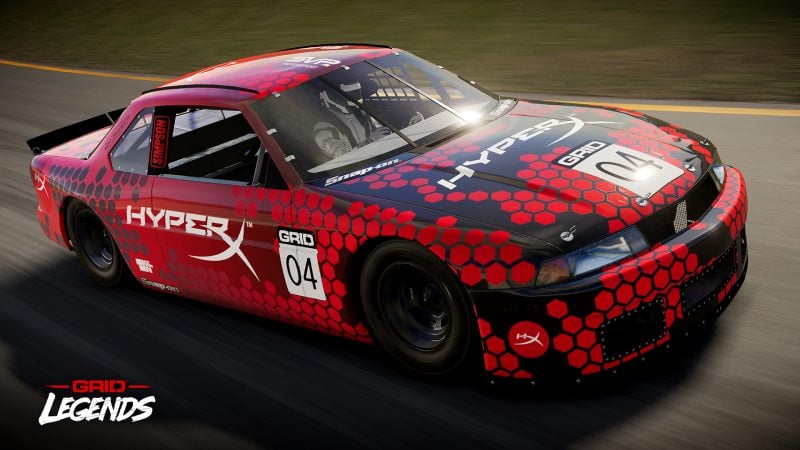
Driving Physics and Handling
For the most part, the physics model is just about as deep as it needs to be, but not any more than that. We’d peg it as an arcade game turned up a couple of notches rather than a dumbed-down sim, but that’s not necessarily damning with faint praise.
There are times when you can be pleasantly surprised to the nuances, and really it’s the insane stadium super trucks that do the best job of this. They’re unruly blighters, and have a tendency to twist so hard that the outside front tire comes right off the deck on full acceleration — leading to woeful understeer. Without a doubt, they’re our favorite cars to drive in the game.
Otherwise vehicle handling is much of a muchness. That’s not to say everything drives just the same, but that the differences are smaller than they probably ought to be — more so if you have unwisely chosen slightly easier settings, with handling characteristics masked by driver aids.
You will find a slightly increased tendency to understeer with driven front wheels and a slightly increased tendency to oversteer with more rearward-mounted engines, but ultimately the differences aren’t major and you can take some pretty big liberties before it starts to bite you.
Another grumble comes with the collision physics. The cars generally don’t feel like they have any particular weight behind them — a racing truck may as well be an Ariel Atom when it hits another car or some scenery — but at the same time you can be stopped almost dead by a two-deep queue of AI failing to get round a hairpin in a timely fashion. And by grabby walls, not to mention how easy it is to get stuck to another car.
Damage is an important feature of the game too, and you’ll often find yourself getting to the end of a race in a car that would have been black-flagged in a demolition derby. However it also has no effect on the car; your time attack machine with enormous wings is no slower without them.
All that said, when you are going full tilt it’s easy to forget the relatively simplistic nature of it all and just enjoy driving, and it does feel a little more natural than its predecessor title, whether on controller or wheel.
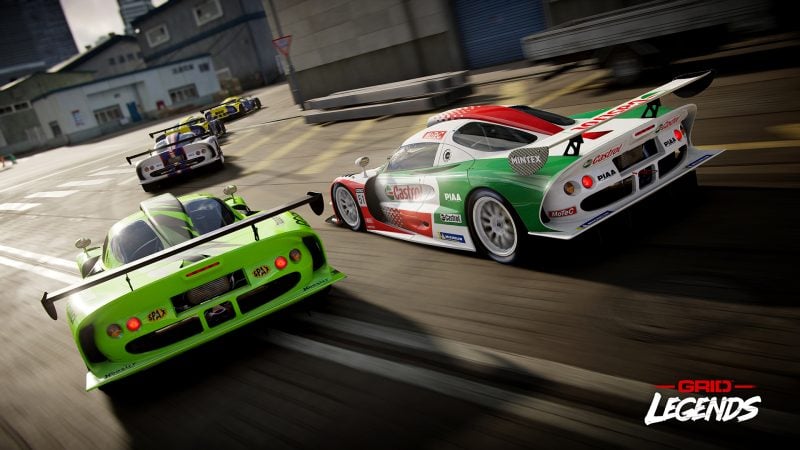
Graphics
GRID Legends is definitely a rather pretty game almost from top to bottom.
Although the raw car models aren’t quite up there with the very best, and the lighting and materials rendering are a step away too, they’re still really rather good. There’s also a lot more going on beneath the skin, as you’ll find when bits start falling off after a Nemesis interaction, with internal components modeled to the same level.
When it comes to the circuits, the newer ones are a much more of a visual spectacle than the GRID carryovers, but it’s actually not so much the tracks themselves as their environments that really shine.
While other games can be considered rather sterile (save the odd person in the crowd walking up and down, or a train or plane every couple of laps), there’s always something going on in the background in Legends and it makes the tracks feel more alive.
It probably won’t take you long to spot the fireworks, which go off with varying frequency in different events — some being annoyingly all race long — but there’s other little touches too. You might see the laser shows at Strada Alpina perhaps, but did you catch the waves crashing against the seafront and kicking up spray?
Where Legends gets really good is in adverse weather. All of the tracks have full weather and time of day options (which you can select in Race Creator, of course), and in cockpit cam in full rain, the water effects are DriveClub good — but at twice the framerate and 4K.
There are a few graphical gremlins here and there, mainly detail pop-in on distant objects and shadows, but it’s generally a good-looking title.
Also there’s no photomode at the moment, though Codemasters is looking to add one down the line.
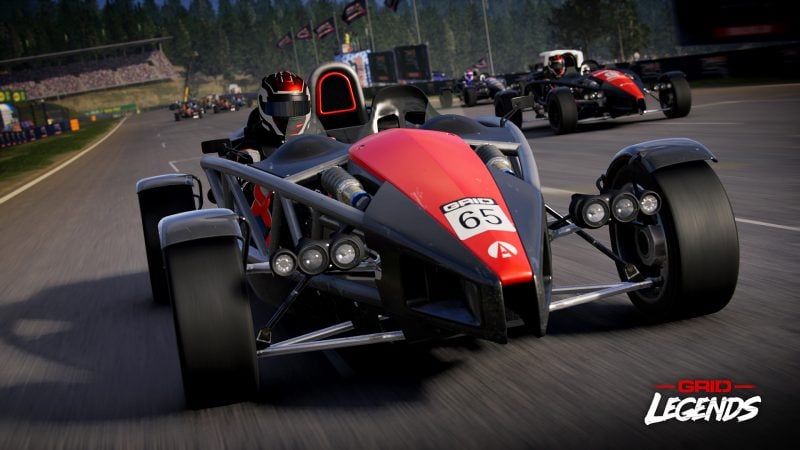
Sound Design
There’s scope for two different scores here for GRID Legends. One is if you have the music on, and the other is if you turn it off.
The music is… dire, and borderline oppressive. In particular the game’s main theme, which seems to be a 90-second loop made up of close to identical phrases that are the musical equivalent of a panic attack, and chimes in at every available opportunity.
Turn it off and you have an almost entirely different game. While perhaps not up there with the better titles this generation, the car engine and exhaust audio is pretty decent and appropriate to the nature of the game; a bit more tunnel reverb wouldn’t go amiss, for the sense of theater, but all-in-all it’s about as engaging as it should be.
One little chink in the audio armor is the tire noises. They’re just too squeaky, even on the massive trucks which should make much beefier noises when traction goes missing.
Like the graphics, it’s actually the environmental sounds that are a strength of the title. There’s all sorts going on around the circuits, not least of which is the commentary team of Claire and Inel nattering about the race over the PA system.
It all adds to the atmosphere, even if we do wish that they had a few more lines; even on a single playthrough of the story they became a little repetitive.
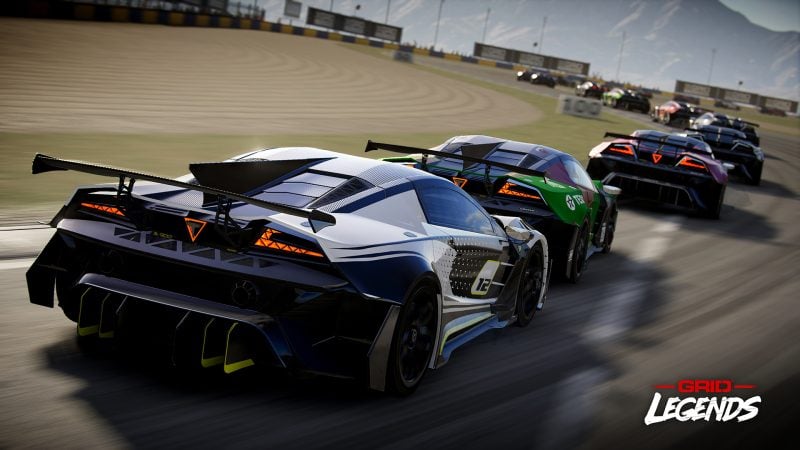
The Verdict
For those of you who are new to the GRID series, GRID Legends pretty much exemplifies what it’s all about. It’s an eye- and ear-candy celebration of everything you can race on a track with four wheels.
The car list is a little small compared to recent titles with hundreds of vehicles, but it’s also pretty well curated to include something from nearly every race series you can imagine, even if you like racing trucks, or electric formula cars. You also won’t run out of tracks to race them on any time soon.
It’s not right up at the top end of simulators, but neither is it fully arcade in nature; it’s just enough of both to be reasonably recognizable as driving cars but still plenty of fun – where else can you put ramps on a track for LMP1 cars?
Although there’s no ranked online, there’s plenty to keep you busy, not least of which is full all-platform crossplay and the hop-in function. The story mode is stuffed with tropes, but really does benefit from being live-action, and it might be the best attempt we’ve seen at an actual story in a racing game.
It’s a good effort to move the game on a bit from the 2019 series reboot, and will be a nice break from more serious stuff over the coming months.
GRID Legends
Learn more about how our rating system works.
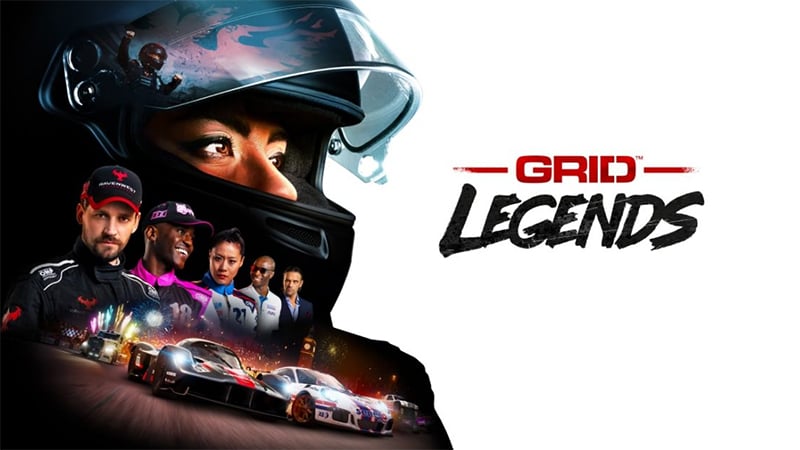
See more articles on GRID Legends.
